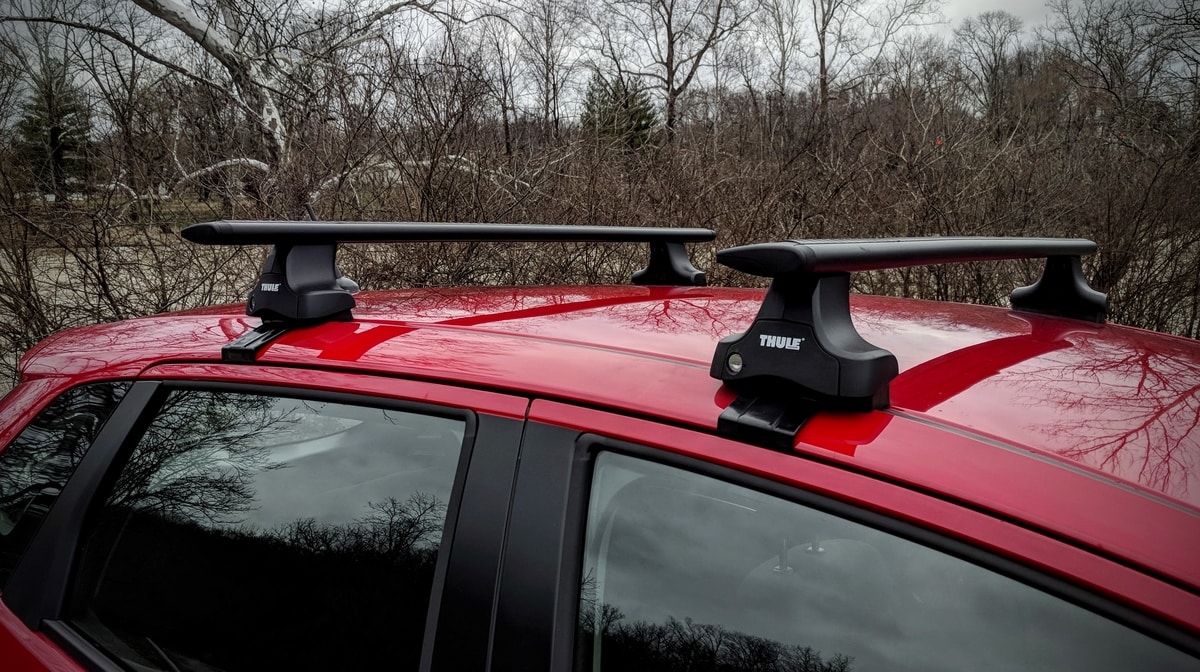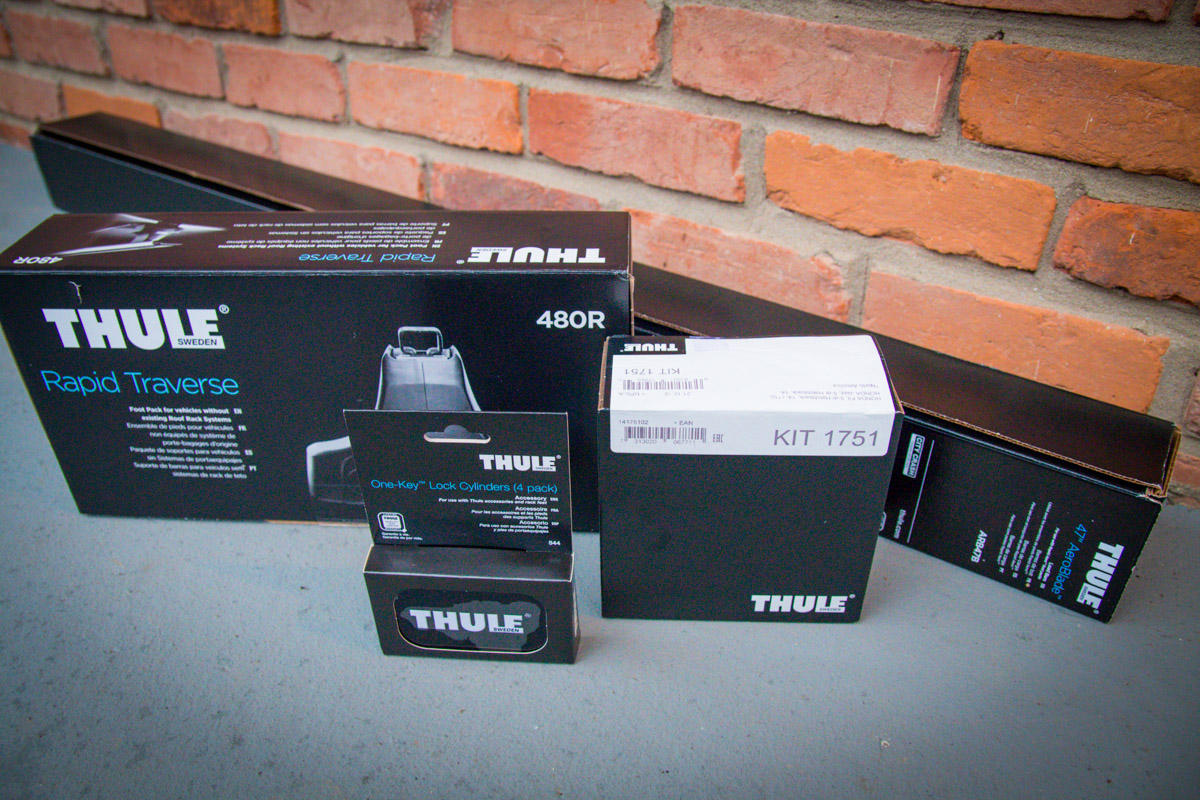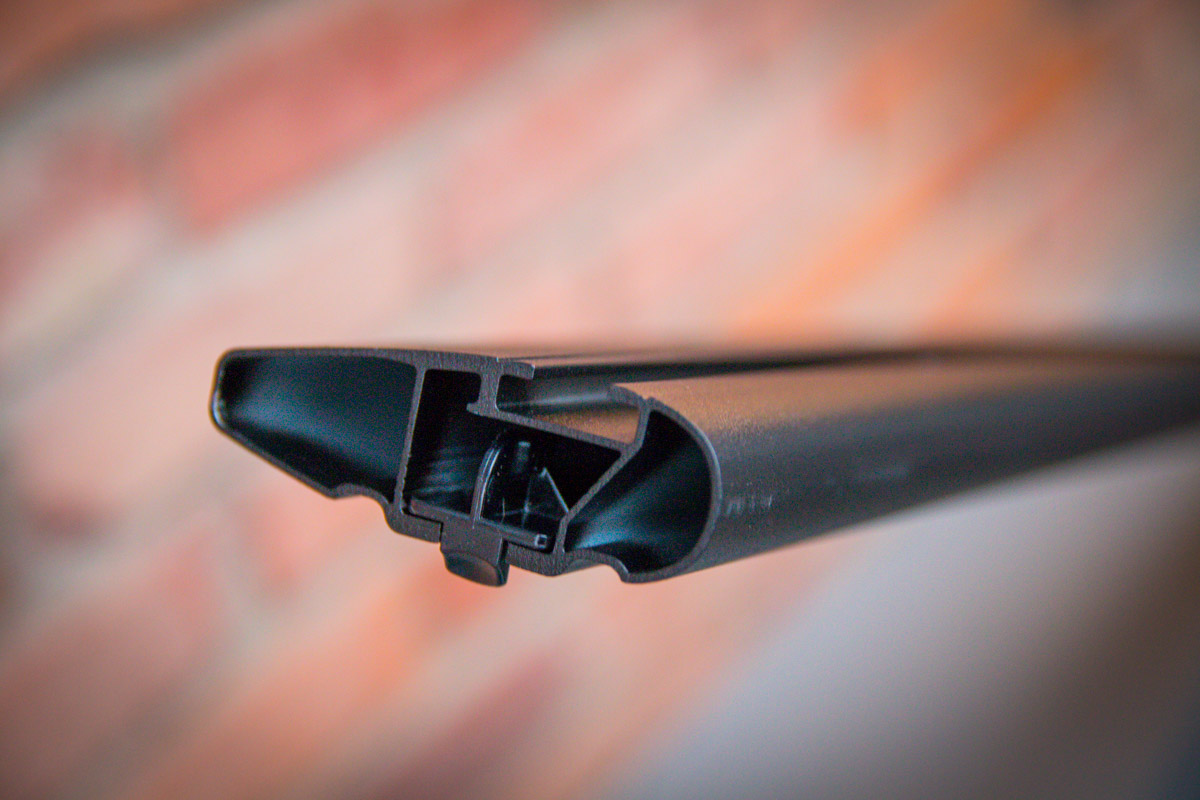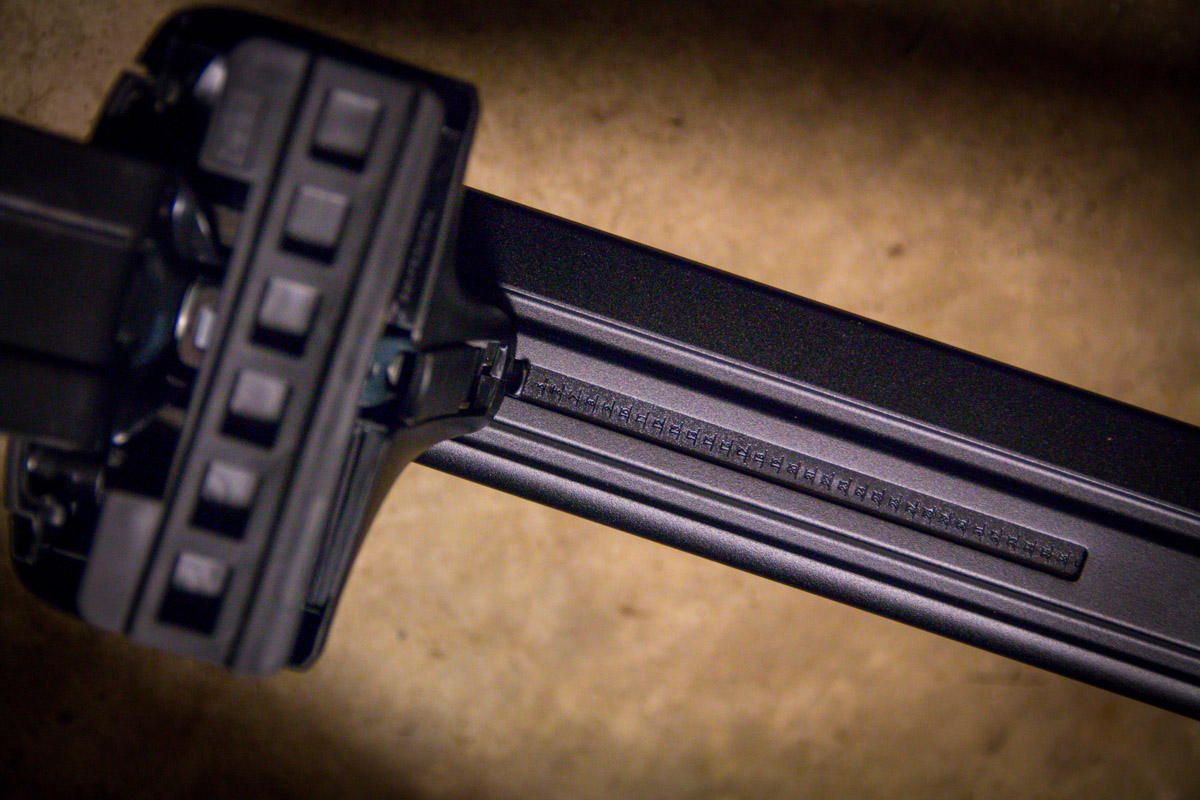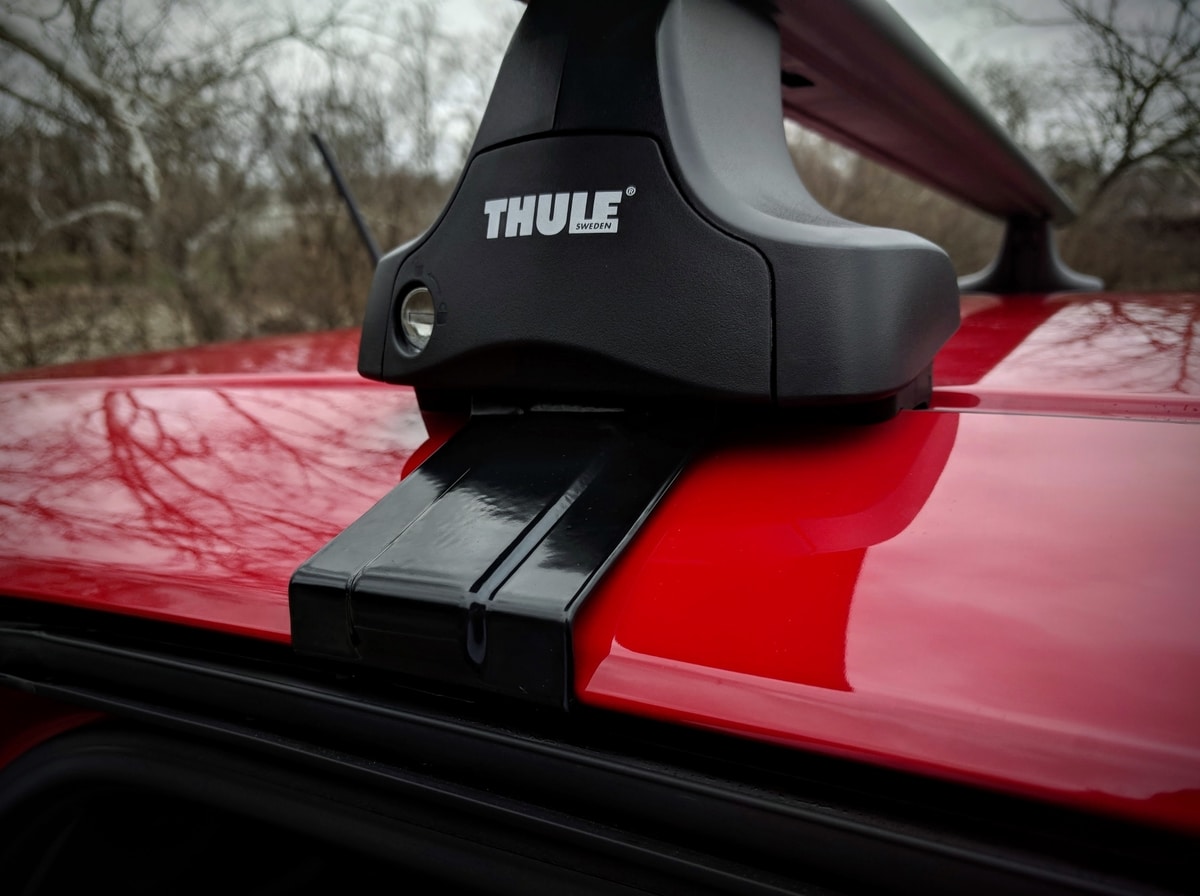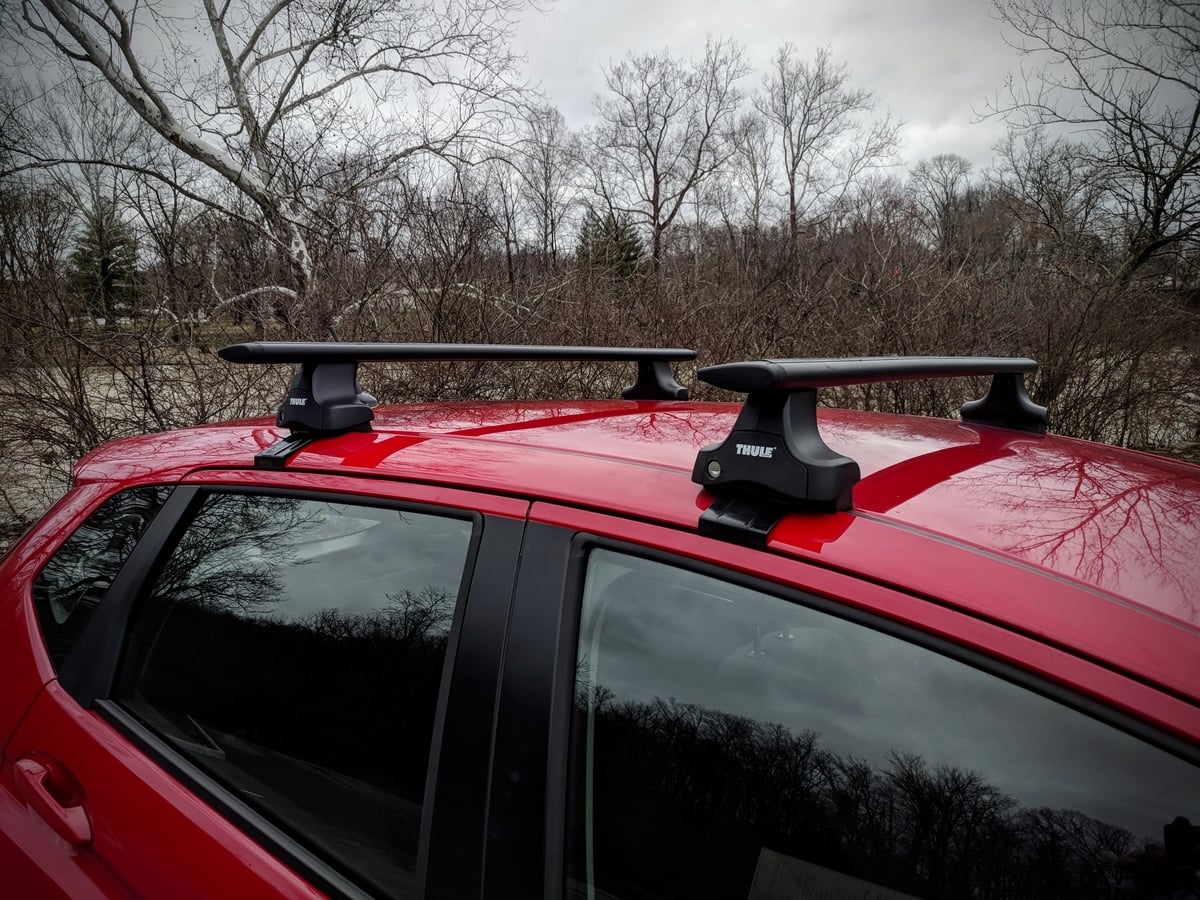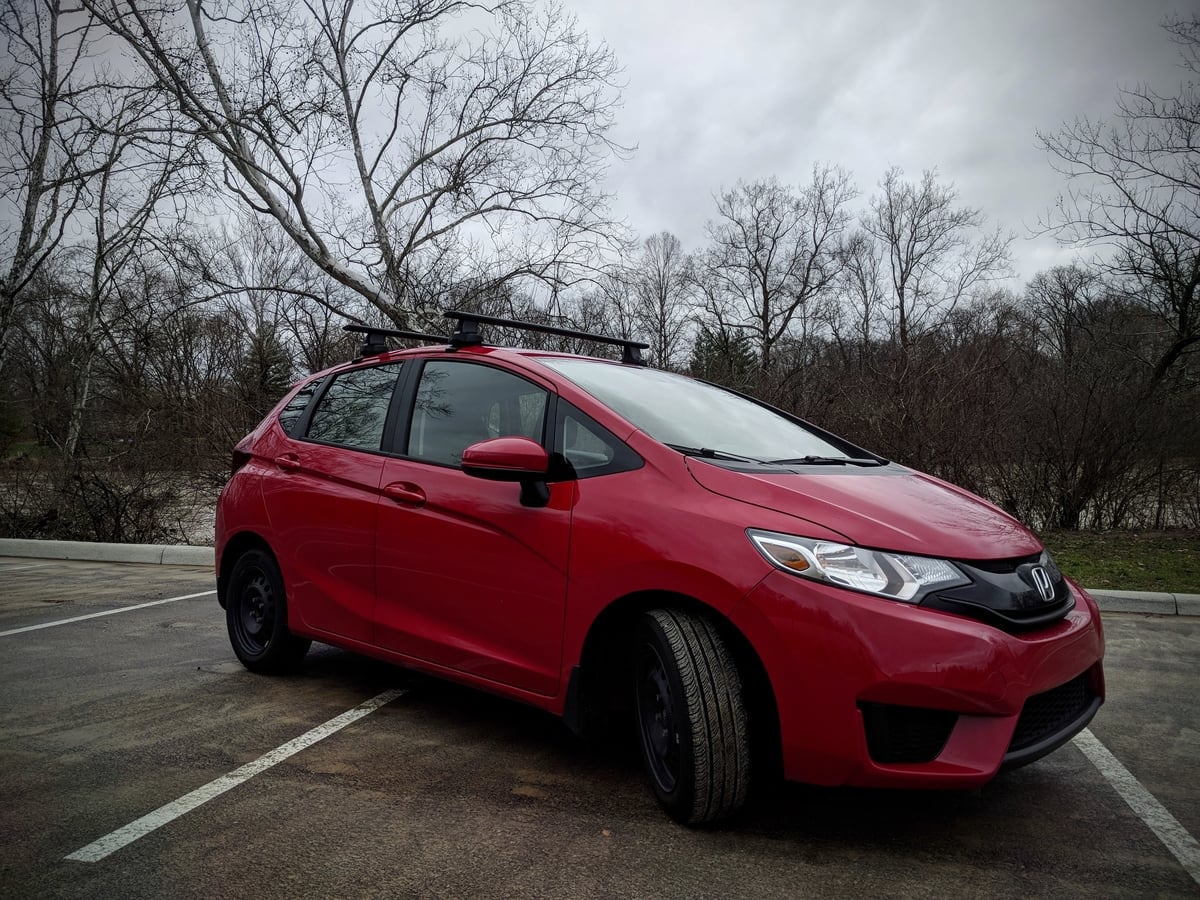The Swedish brand Thule – pronounced [tool-e] – is no stranger in the rack market. They’re one of the largest providers of roof, hitch and trunk racks in the world. But with all their experience, how is their top of the line roof rack system? We’re taking a closer look at their AeroBlade setup and gathering our thoughts after a few weeks on the road.
Most configurations are different since most cars are different. The Thule Fit My Car function online matches the appropriate components to your car’s body. We received the kit for a 2017 Honda Fit which includes 47″ AeroBlade bars and the Rapid Traverse foot pack (KIT1751). The bars are available in silver and black while the feet only come in black. The complete set system retails for $510 with lock cylinders costing an additional $40.
Flying crossbars:
Taking a closer look at the bars we can see the wing-shaped aluminum form. The aerodynamic contour reduces both noise and drag compared to a square bar setup. Plus, with their BoxBeam extrusion, it provides enough strength to hold 220lbs which is 55lbs more than their SquareBar.
The WindDiffuser is a rubber strip that has small ridges angled across the top. These ridges disrupt the air enough to dampen the sound of it as it rushes over the wing. A squirt of bike wash helps to easily slide these into the bar’s t-slot. SwitchBlade bar plugs flip open making it easy to install accessories and stay in place with a click.
On the flip side, the bar has Thule’s integrated SmartSlider which helps make foot placement easier. Slight friction on the slider keeps it from moving while driving which also reduces whistling. Just remember while setting up, the slider’s numbers represent a scaled value and not cm or inch values. So match accordingly to the instructions.
Sturdy towers:
The Rapid Traverse feet slide into place under the bar and latch onto the car’s rooftop. Rubber pads – car specific – lift the feet to the appropriate height while plastic-dipped metal brackets hug the rack to the roof. Both being rubber and plastic should reduce any paint wear. The complete setup stands only 4,1/2″ from roof to diffuser which keeps a relatively low profile. It’s important to note the feet have a weight limit of 165lbs which is less than the bar itself. Plus, the vehicle’s roof capacity may vary so double check before loading it down.
The roof rack:
Overall, setting up the Thule AeroBlade system on the Honda Fit was relatively easy. Having prior experience with similar systems helped, but following the instructions makes it a job nearly anybody can do. Personally, I found a roof rack to be a good option since I’m 6′,4″ and drive a relatively short car. Besides, the compatible hitches for the Fit hang down below the bumper which – for me – is a bit of an eyesore.
On the road:
After a couple days on the road with the AeroBlade system, I could tell a noticeable difference between wind sounds compared to other square bar setups (on other cars). There’s an occasional whistle here and there, but 98% of the time the bars just swish through the air. I do expect more noise as accessories are added but it’s a good starting point. As for efficiency, the bar’s influence on fuel consumption seems negligible. Prior to installing the system, I was averaging about 38mpg/tank. Since then I’m closer to a firm 37mpg/tank. It is a difference, but weather and driving habits alone can have larger impacts on fuel economy. Again, this is something that will likely change as more accessories are added; especially with a bike up there.
